 |
 |
 |
| |
Cardiovascular disease; HIV, ART, immunodeficiency, pro-inflammation and other factors
|
| |
| |
Reported by Jules Levin
9th International Congress on Drug Therapy in HIV Infection, November 9-13, 2008, Glasgow
Jens D. Lundgren, MD, DMSc
Professor, Faculty of Health Sciences,
Rigshospitalet & University of Copenhagen
Copenhagen, Denmark
AUTHOR SUMMARY
Traditional CV risk factors, untreated HIV and certain antiretroviral drugs may all contribute to CV risk in HIV
Prevention of CV risk
-- Focus on those with underlying CV risk by calculating this
(http://www.cphiv.dk/TOOLS.aspx).
-- Extrapolate knowledge from the general population in managing modifiable traditional risk factors.
-- No not interrupt antiretroviral therapy once initiated
-- Consider modifying component of ART if believed to contribute to elevated CV risk
ART should be initiated in asymptomatic antiretroviral na´ve patients
with CD4 counts <350 cells/νL
-- There remains uncertainty whether even earlier use of ART is
beneficial - question currently assessed in RCT
From Jules: Dr Lundgren provides a very well done talk at Glasgow on cardiovascular risks for HIV+ individuals. He reports untreated HIV, certain ART drugs, and traditional risk factors all contribute to increased risk in HIV. I would expand this and suggest HIV+ individuals in all categories are at increased risk for inflammation which can increase risk for not just cardiovascular disease but many other comorbidities. And this includes those with high CD4 and undetectable viral load. But high CD4 and undetectable viral load appear protective. Chronic viruses including HIV cause inflammation and suppressing the virus successfully does not necessarily prevent inflammation. HIV enters the brain, affects mitochondria in cells across organ systems, and ART has effects as well even if one achieves undetectable viral load and high CD4. We need HIV and aging research to begin to examine these questions and hopefully to better characterize these questions.
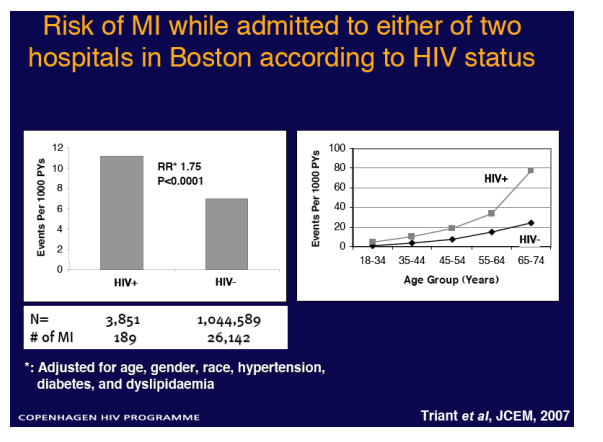
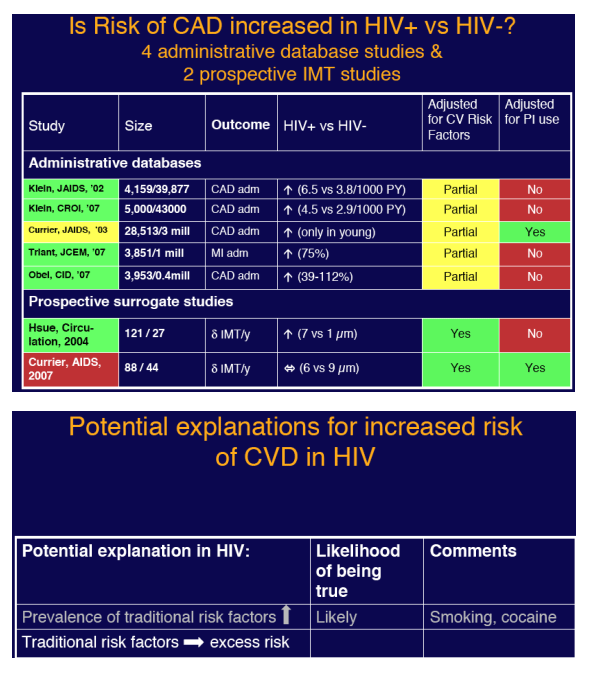
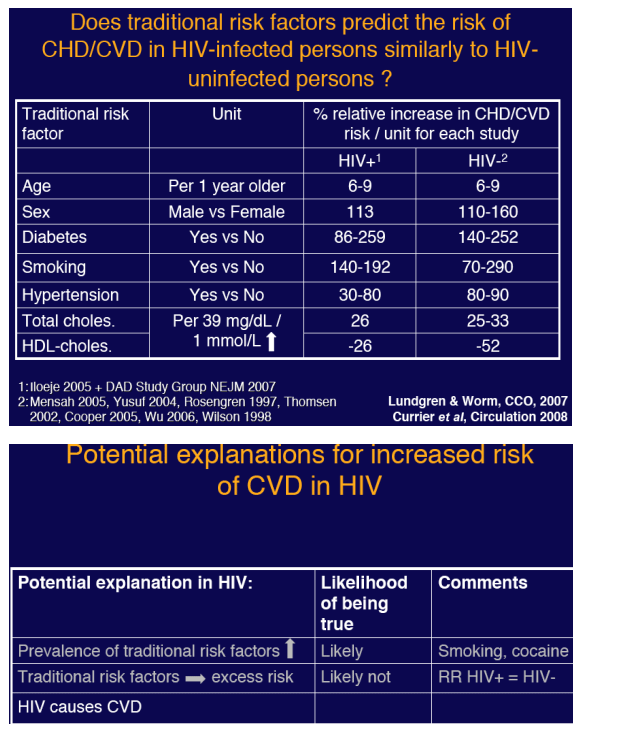
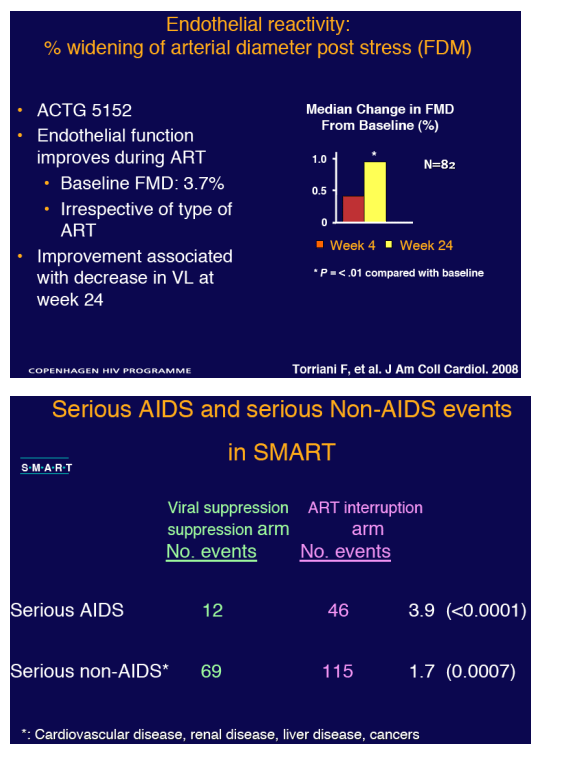
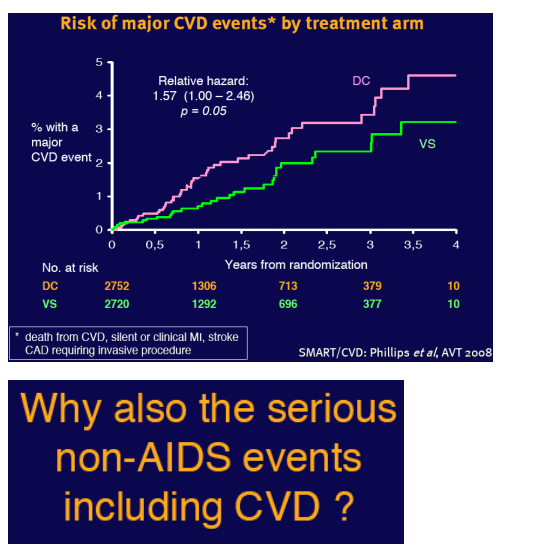
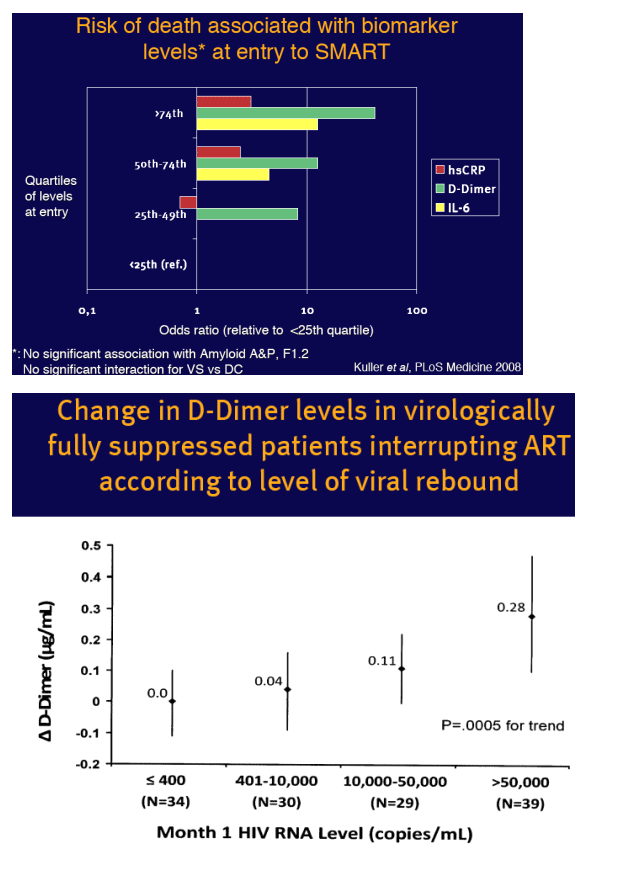

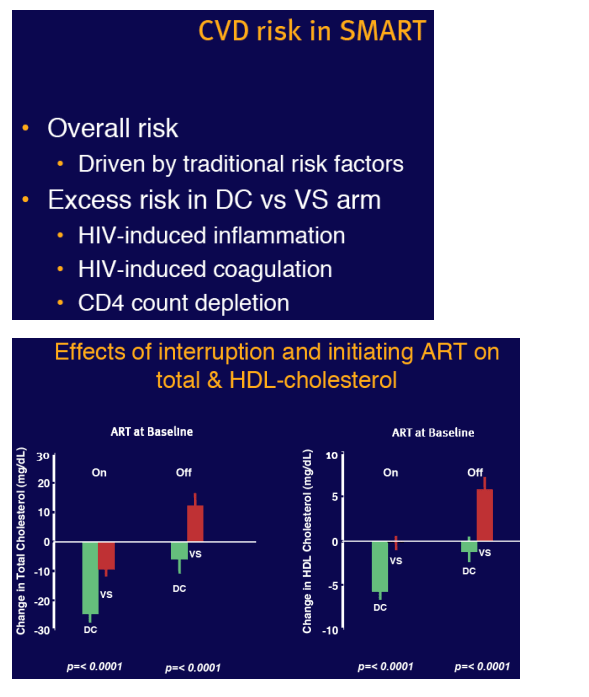
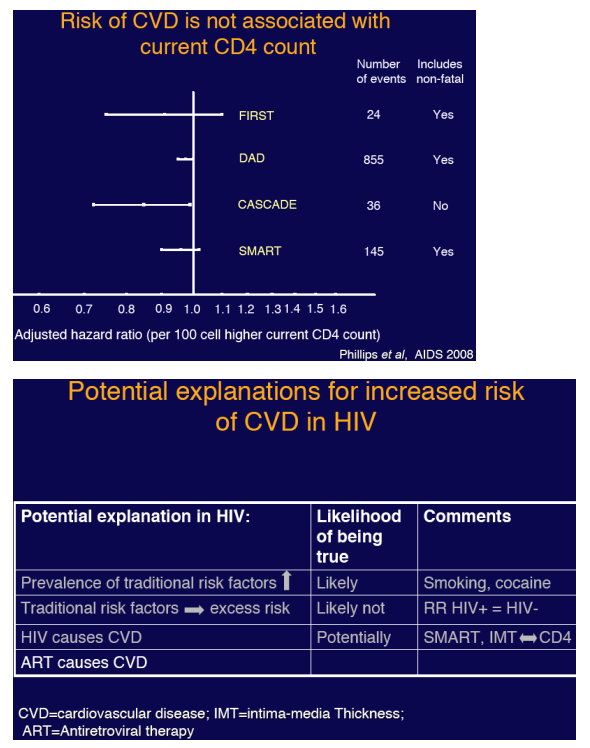

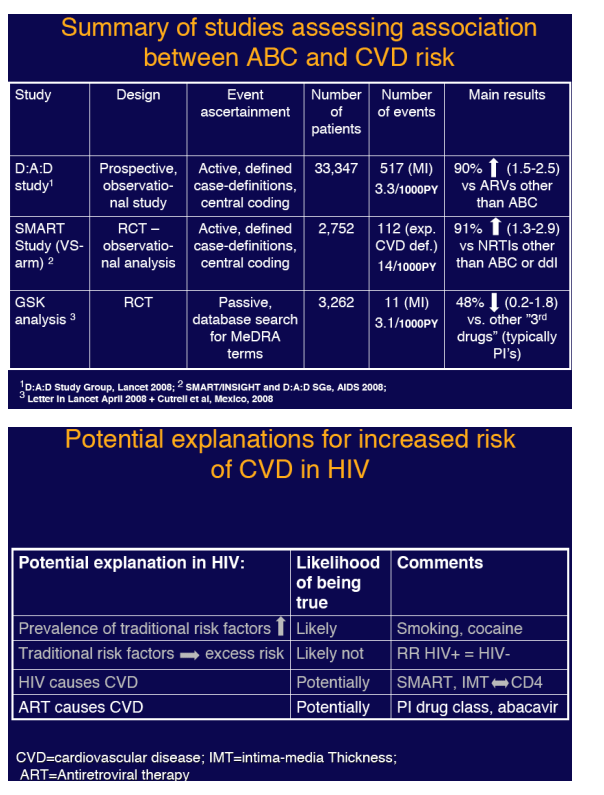
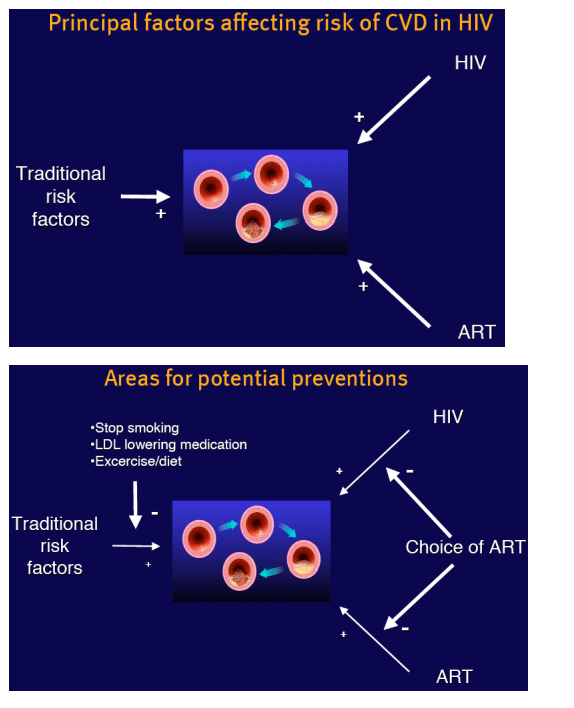

|
| |
|
 |
 |
|
|